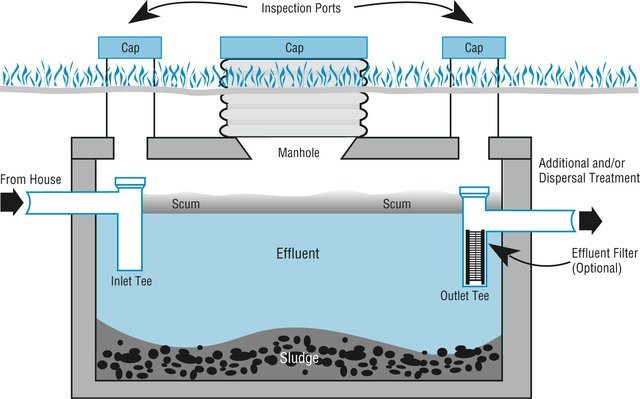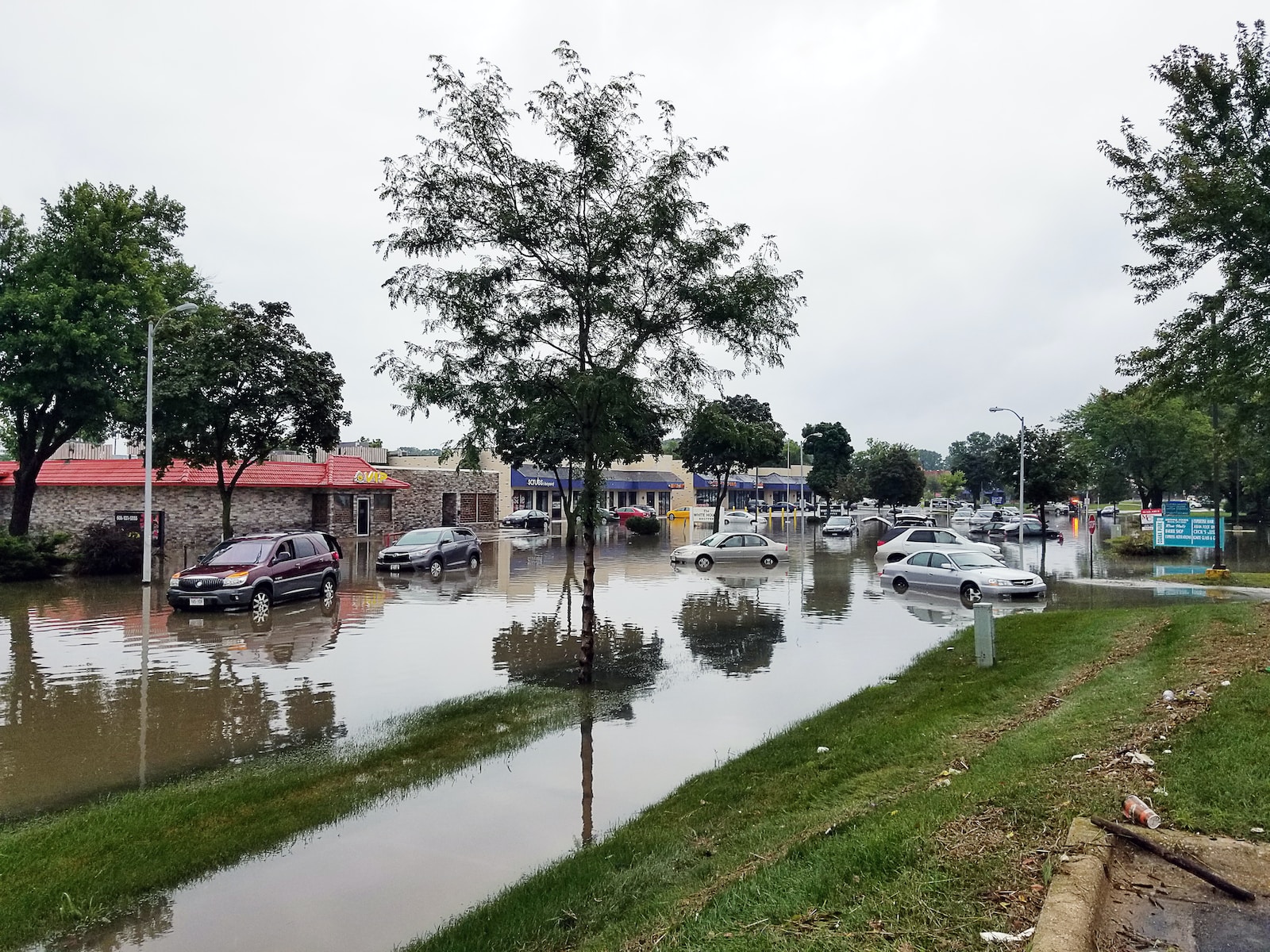Understanding Septic Systems and Flood-Prone Areas
What is a septic system and how does it work?
A septic system is an underground wastewater treatment structure commonly used in areas where centralized sewer systems are not available. It consists of a septic tank and a drainfield. Wastewater from the house enters the septic tank, where solids settle to the bottom and liquids flow out to the drainfield for further treatment and dispersal into the soil.
Factors to consider when installing a septic system in a flood-prone area
Installing a septic system in a flood-prone area requires careful consideration to ensure its proper functioning and prevent any environmental contamination. Here are some factors to keep in mind:
- Elevation: Ensure that the septic tank and drainfield are placed above the flood level to avoid inundation during heavy rains or floods. This can be achieved by raising the system above the ground or using elevated mounds.
- Percolation: The soil’s ability to absorb water plays a crucial role in the septic system’s effectiveness. Conduct a percolation test to determine the soil’s permeability and suitability for wastewater treatment.
- Septic Tank Design: Opt for a larger septic tank that can accommodate more water during periods of heavy rainfall. Additionally, consider installing a watertight tank with an anti-floatation device to prevent it from floating during a flood.
- Emergency Preparedness: Develop an emergency plan to handle situations where the septic system becomes inundated with floodwater. This may involve redirecting wastewater to a temporary storage tank or taking measures to prevent backflow into the house.
By considering these factors and working with a professional septic system installer, you can ensure that your septic system functions efficiently even in flood-prone areas. Regular maintenance and inspections are also essential to keep the system in optimal condition and avoid any potential issues
Site Evaluation and Planning
Assessing the property for flood risks and determining suitable septic system location
Before installing a septic system in a flood-prone area, it is crucial to assess the property for potential flood risks and choose a suitable location for the system. Here are some key considerations:
- Elevation: Determine the elevation of the property to understand its susceptibility to flooding. Ideally, the septic system should be installed in an area that is higher than the flood level.
- Proximity to water bodies: Consider the location of nearby rivers, lakes, or streams. Septic systems should be located at a safe distance to prevent contamination of water sources during floods.
- Soil type: Evaluate the soil composition, permeability, and drainage capacity. Sandy or well-drained soil is preferable for septic systems in flood-prone areas.
- Backup options: Plan for backup systems that can handle excessive water flow during floods, such as installing a pump or creating an emergency overflow area.
Design considerations for flood-prone areas
Installing a septic system in a flood-prone area requires additional design considerations to ensure its functionality and longevity:
- Elevation of components: Raise the septic tank and drain field above the flood level to prevent damage and keep the system operational during flooding.
- Ventilation: Install vent pipes vertically above the flood level to prevent water from entering the system through the pipes.
- Waterproofing: Use watertight materials and seals for all system components to prevent water infiltration during floods.
- Regular maintenance: Conduct regular inspections and maintenance to ensure the system remains functional after flooding events. This may include emptying the tank, checking for damage, and repairing any issues.
By carefully evaluating the property and implementing the necessary design considerations, installing a septic system in a flood-prone area can be done successfully, providing safe and efficient wastewater treatment even during challenging conditions.
Selecting the Right Septic System
Are you considering installing a septic system in a flood-prone area? Well, you’ve come to the right place. When it comes to flood-prone areas, it’s essential to choose a septic system that can withstand potential flooding and still function effectively. Here are some key points to consider.
Types of septic systems suitable for flood-prone areas
- Elevated system: This type of septic system is designed to be installed above ground level. It is ideal for areas prone to frequent flooding. By elevating the system, you can prevent floodwaters from entering and damaging the system.
- Mound system: Mound systems are built above the natural ground level. They consist of a raised drain field that allows wastewater to be treated and filtered before reaching the soil. The elevated drain field helps protect the system from floodwaters.
Choosing the appropriate septic system based on flood resilience
- Flood-resistant materials: When selecting a septic system, ensure that it is constructed using flood-resistant materials. This includes corrosion-resistant pipes, durable tank design, and watertight connections.
- Proper installation: It is crucial to have the septic system installed by professionals who are experienced in dealing with flood-prone areas. Proper installation techniques, including proper elevation and drainage, can help enhance the system’s flood resilience.
- Regular maintenance: To ensure the longevity and functionality of your septic system in a flood-prone area, regular maintenance is essential. This includes regular inspections, pumping, and addressing any issues promptly.
By selecting the right septic system and taking necessary precautions, you can ensure that your system remains functional and resilient even in flood-prone areas. Remember, consulting with septic system professionals can provide valuable guidance and expertise specific to your location.

Special Considerations for Flood-Prone Areas
When it comes to installing a septic system in a flood-prone area, there are some important considerations that need to be addressed. Flooding can pose a significant risk to the functionality and integrity of a septic system. However, with the right precautions, you can ensure that your septic system remains robust even in the face of flooding.
Elevated or mound septic system options
One option to consider is the use of an elevated or mound septic system. These systems are designed to raise the drainfield above the flood level, protecting it from water damage. By elevating the drainfield, you can prevent the infiltration of floodwater into the septic system, reducing the risk of system failure. It is important to consult with a professional to determine if this option is appropriate for your specific situation and local regulations.
Implementing flood-resistant components and features
In addition to elevated or mound systems, there are other flood-resistant components and features that can be incorporated into your septic system design. This may include the use of watertight tank covers, backwater valves, and flood alarms. These measures can help to minimize the risk of floodwater entering the septic system and causing damage.
It is crucial to work with a qualified septic system professional who has experience in designing and installing septic systems in flood-prone areas. They can assess your specific site conditions and develop a solution that takes into account local regulations and best practices.
By implementing elevated or mound septic systems and incorporating flood-resistant components, you can ensure the longevity and functionality of your septic system in a flood-prone area. It is essential to prioritize the protection of your septic system in order to avoid costly repairs and environmental hazards associated with system failure.
Title of the section
There are many reasons why businesses should prioritize branding. It not only helps to distinguish your business from competitors but also makes your brand more recognizable.
Title: Distinguish your business from competitors
- Be Unique: In a market saturated with similar products or services, branding allows you to stand out. By showcasing your distinct values, story, brand promise, and other assets, you can create a unique point of difference that sets you apart from your competitors.
- Have Values: Leveraging your unique aspects can create a lasting impression on your target audience. When your brand reflects your values, it builds trust and establishes an emotional connection with customers.
Title: Become more recognizable
- Get Recognized: Consistent branding efforts help in making your brand more memorable. When customers can easily identify your company through visual, auditory, or physical elements, it increases brand recognition.
- Foster Trust: Brand recognition fosters trust among customers, and trust plays a significant role in their buying decisions. When customers are familiar with your brand, they are more likely to choose your products or services over competitors.
- Influence Engagement: Brand recognition also affects how customers engage with your content, emails, or ads. When customers have a positive emotional connection with your brand, they are more likely to engage and respond to your marketing efforts.
In summary, branding is crucial for businesses seeking to differentiate themselves from competitors and build a strong and recognizable brand. By showcasing your unique values and establishing a lasting presence, you can attract and retain customers.

